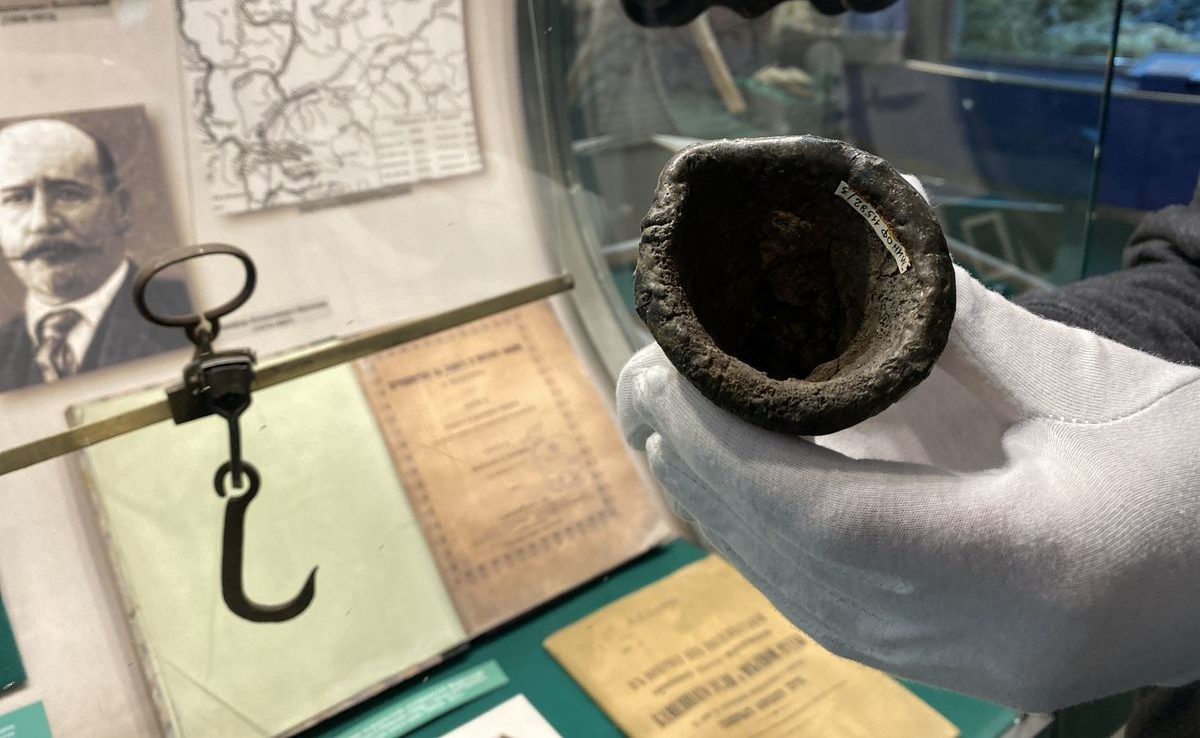A famous polar explorer Mikhail Belov led the expedition that studied the ancient Russian city for four field seasons, in 1972-1975. The most important discovery made during the excavations was a foundry, where metal was melted in crucibles.
From the monograph on Mangazeya, prepared by historians and archaeologists under the leadership of Belov, it is known that many crucibles were found. This testified to a large scale of production. On the crucible from the Norilsk Museum there is an inscription: “To N.N. Urvantsev – Mangazeya expedition. 01/10/73 “. Surely the artefact was a gift from colleagues for the 80th anniversary of the scientist.

The crucible has one more uniqueness. As Nikolai Urvantsev believed, he wrote about this in his book The Discovery of Norilsk in 1981, not only ore was smelted in Mangazeya: “Of course, the ore for smelting was brought from Norilsk. At the foot of the mountain Rudnaya a pack of clay shales saturated with carbonic salts of copper — minerals, malachite, and azurite — came to the surface. Those shales were seen by F.B. Schmidt during a visit to Norilsk in 1866. Their bright green and blue colors were immediately evident, attracting the attention of anyone who was not even knowledgeable in mining.
Such carbonic ores easily melt in the most primitive furnaces, that is why people could mine them at that time. Of course, those carbonate ores were used by Mangazeya craftsmen. The presence of platinoids in copper smelting and the remains of copper products found during excavations of the Mangazeya foundry confirms it. “These metals are characteristic of all Norilsk ores, both primary sulfur dioxide and secondary oxide copper-carbonate “.
The Mangazeya crucible was transferred to the Norilsk Museum by Urvantsev himself. Most likely, this happened in the 1970s when Arseny Bashkirov was the museum’s head, and the First House of Norilsk became a branch of the museum.
The first materials related to the name of the discoverer of our city and explorer of the Severnaya Zemlya archipelago appeared in the museum in the late 1940s. With the active participation of the scientist released from the Norillag prison, his first geological and paleontological collections were formed. Later, documents, photographs, books, personal belongings, household items from his Norilsk-Taimyr expeditions were brought from Leningrad, where Nikolay returned after rehabilitation with his wife Elizaveta. In 1985, when the Urvantsevs died, all their legacy was transferred from the All-Russian Research Institute of Oceangeology, where the scientist worked, to Norilsk.
Read in the Artefacts: about ancient brass sundial, pipes made of a mammoth tusk, and other unique items from local museums.
Text: Valentina Vachaeva, Photo: Norilsk Museum



